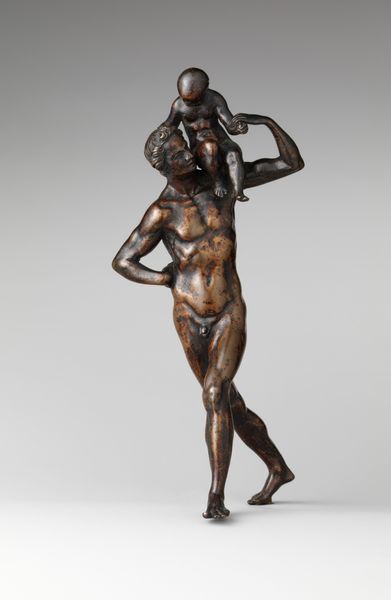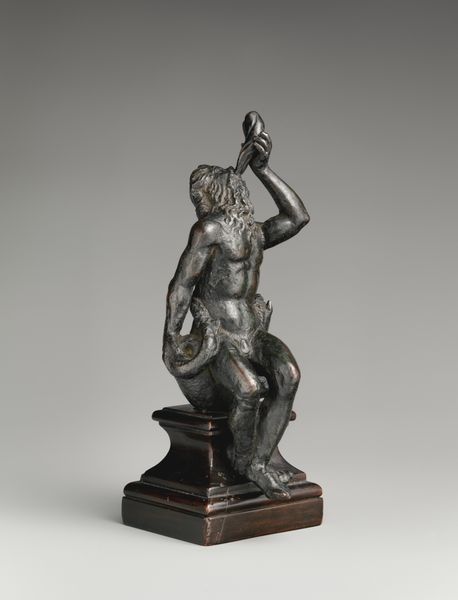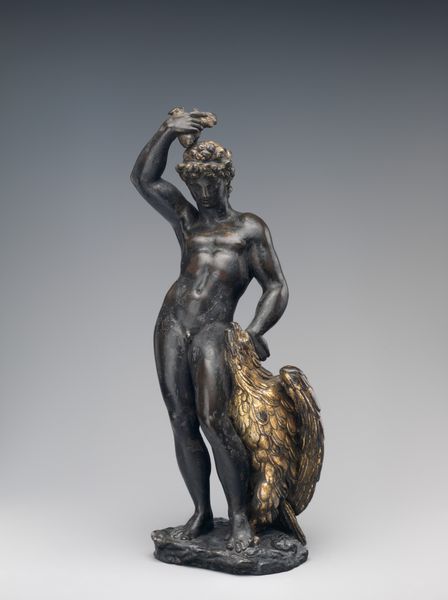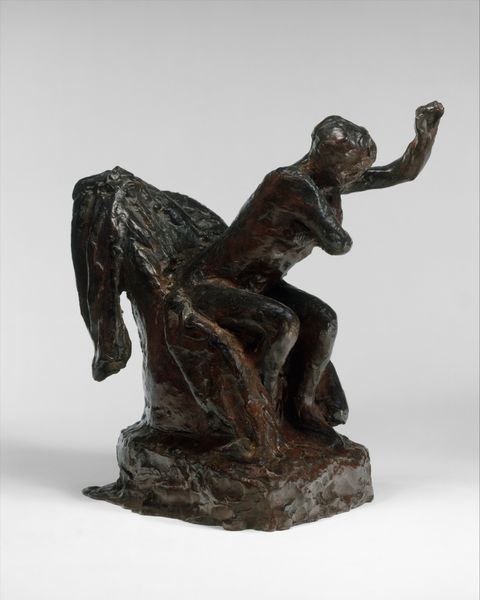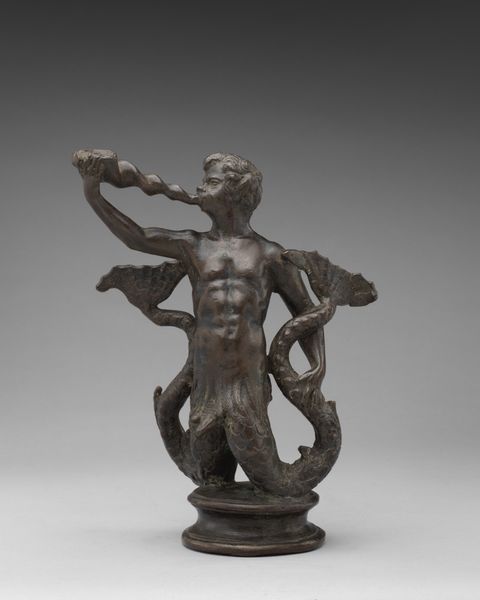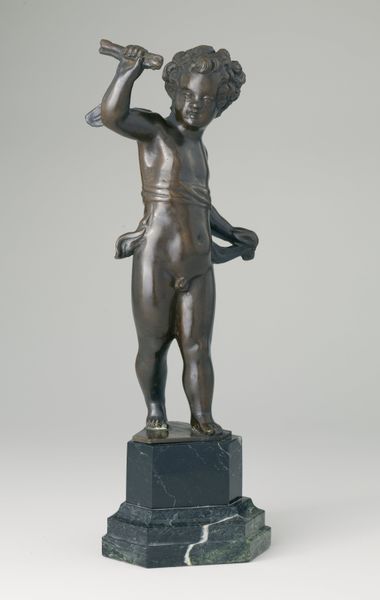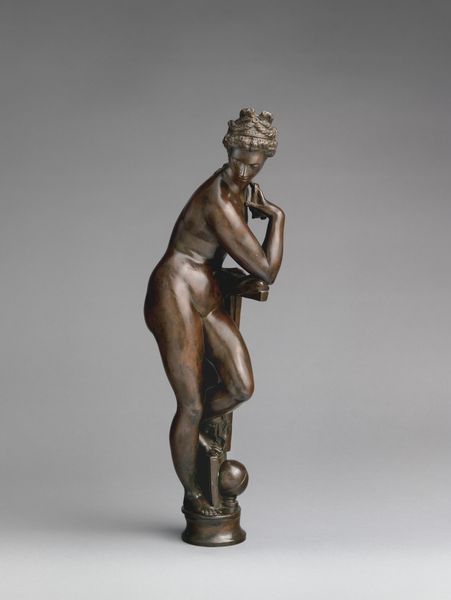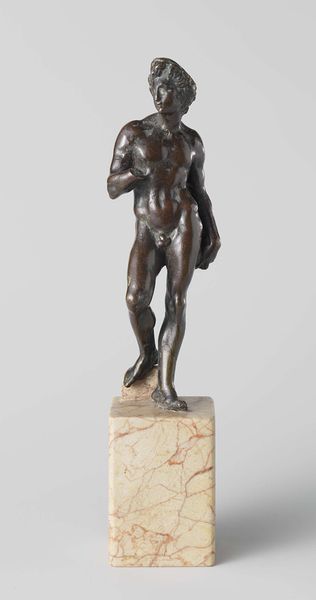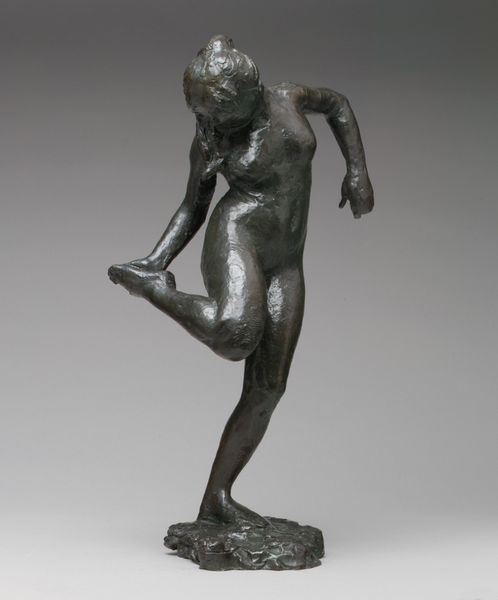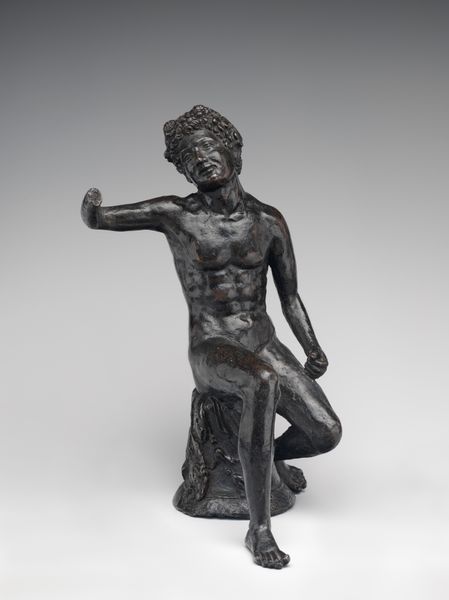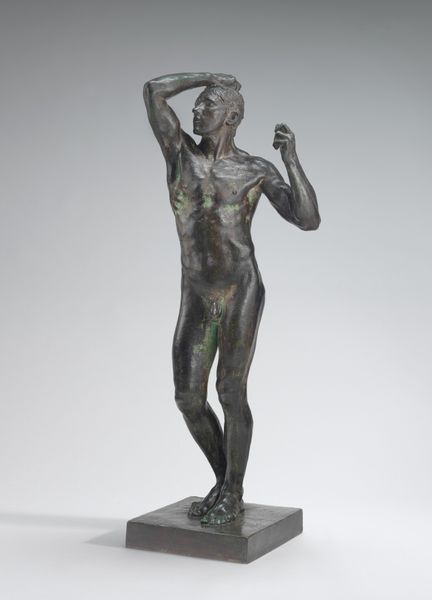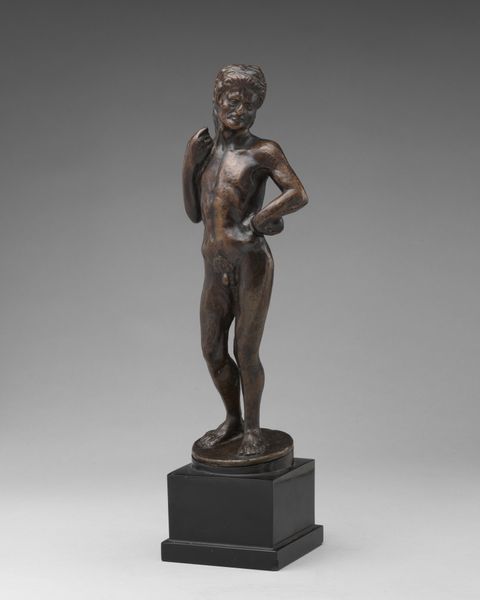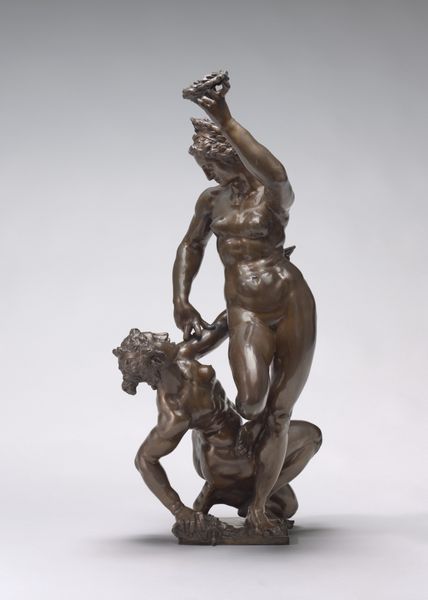
bronze, sculpture
#
bronze
#
figuration
#
11_renaissance
#
ancient-mediterranean
#
sculpture
Dimensions: overall (without base): 23.8 x 12.4 x 11.3 cm (9 3/8 x 4 7/8 x 4 7/16 in.) base: 7.9 x 12.7 cm (3 1/8 x 5 in.)
Copyright: National Gallery of Art: CC0 1.0
Curator: Welcome. Before us stands a bronze sculpture from around 1500, crafted by Severo da Ravenna. It's titled "Kneeling Satyr Supporting the Figure of an Emperor". Editor: It's rather striking. The immediate impact is this odd juxtaposition – the raw, earthly figure of the satyr in such devoted supplication to a much smaller, regal figure. The textures are wonderfully rendered. Curator: The composition certainly plays with power dynamics. Ravenna was known for his engagement with ancient forms and pagan subjects, and this bronze exemplifies that interest. Consider the process: the lost-wax casting, the skill needed to capture the detail. It speaks to a workshop deeply invested in reviving classical techniques during the Renaissance, especially the burgeoning culture of courtly patronage. Who exactly would have commissioned such a piece, and for what purpose? Editor: That tension is key, isn't it? The dark bronze allows the eye to flow across the musculature of the satyr, and then be arrested by the polished finish of the tiny emperor, held aloft as if weightless. Semiotically, the Emperor could represent the burden of rulership – held up by base nature or brute force embodied in the satyr. The figure above almost reads as a classical contrapposto in miniature. Curator: Yes, but let's not forget that bronze casting itself, particularly in Renaissance Italy, was a deeply collaborative affair. The availability of materials, the organization of labor, the patron’s explicit desires—these were all defining features. Did the artist have the political clout to select which emperor he immortalized? The material itself - where was the bronze mined? How was it refined? This all played a role in the finished product. Editor: Agreed, but the relationship between the forms cannot be ignored. Note how the upward gaze of the satyr creates a visual pathway towards the figure of the emperor; it underscores this thematic dance between earthiness and imperial authority. Curator: And that dichotomy informs how the object would have been used, perceived, and, ultimately, how it survived across centuries to reach this very museum. Editor: A compelling blend of aesthetic values and deeper thematic inquiry, wouldn't you agree?
Comments
No comments
Be the first to comment and join the conversation on the ultimate creative platform.
